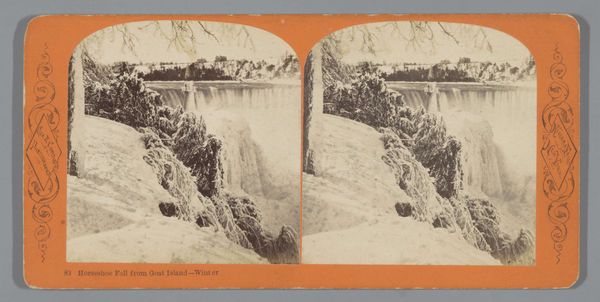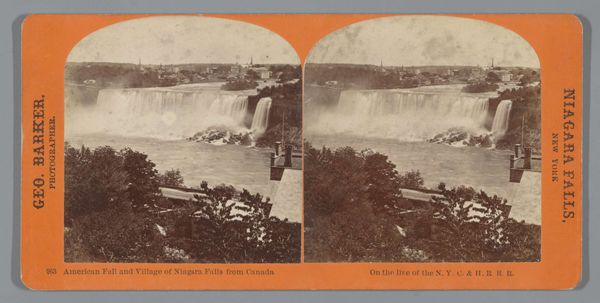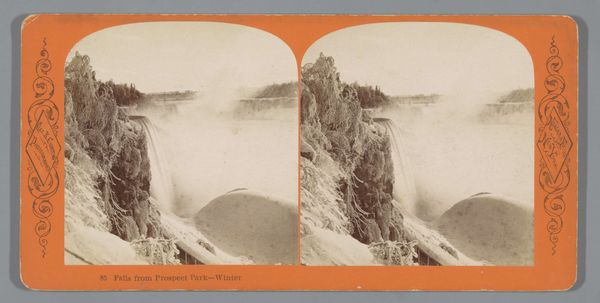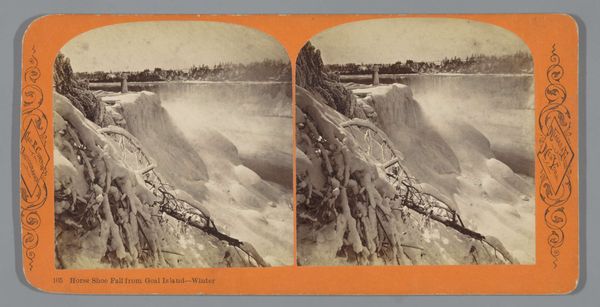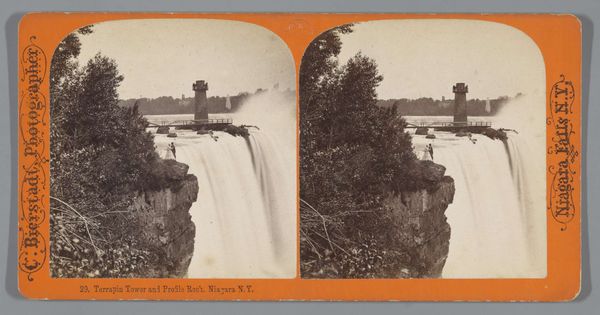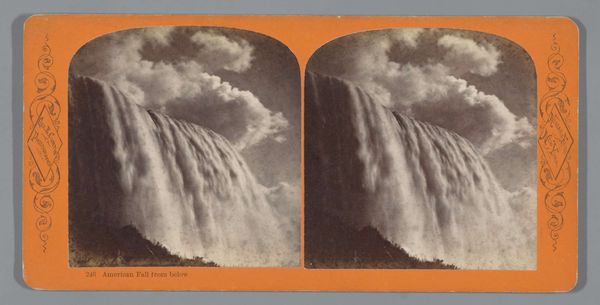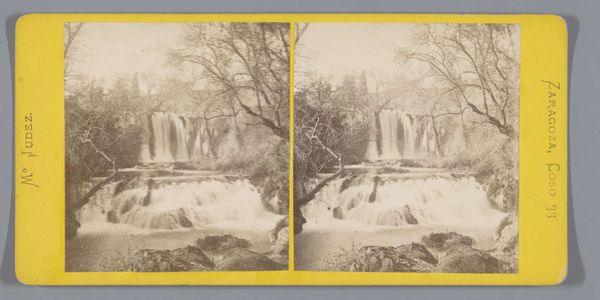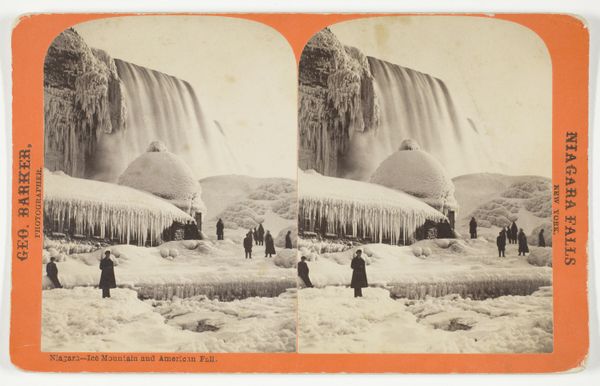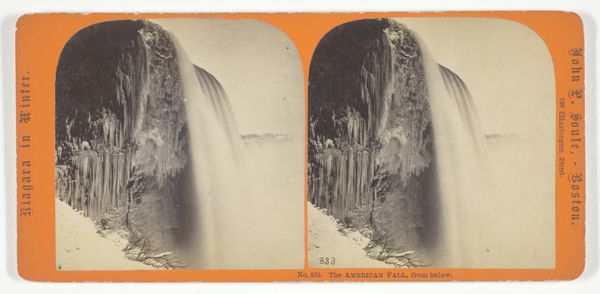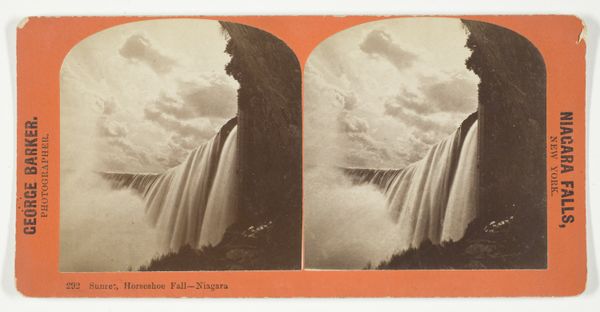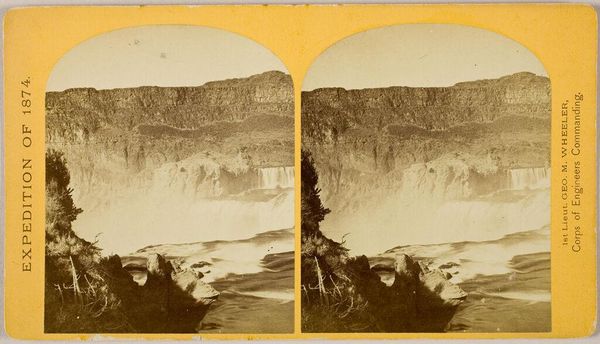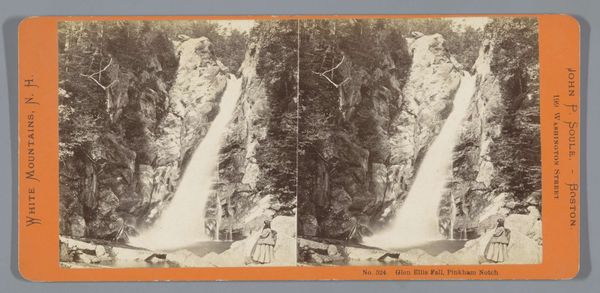
Dimensions: height 86 mm, width 174 mm
Copyright: Rijks Museum: Open Domain
Curator: This stereo card depicts Horseshoe Falls in winter, seen from the Canadian side. It's credited to George Barker, dating from sometime between 1863 and 1894. An albumen print, I believe? Editor: Yes, the rich sepia tones certainly point to an albumen print. My first impression is its rather sublime quality. The cascading water almost seems frozen in time, suspended between motion and stillness. The snowy foreground adds to the feeling of isolation and awe. Curator: Absolutely, the framing draws the eye directly to the powerful yet delicate veil of the falls. The monochrome palette perhaps intentionally softens what would otherwise be a rather intimidating natural phenomenon, making the scene contemplative rather than overwhelming. The cultural perception of Niagara Falls, in particular, shifted quite drastically over the nineteenth century. This stereograph was created during the period where the falls were shifting from being appreciated primarily for their economic potential to also their aesthetic, almost sacred quality. Editor: An interesting tension—sacred spectacle married to burgeoning industry. I find it fascinating how these early photographs of Niagara, like Barker’s, fed the popular imagination. The stereoscopic format itself, creating a sense of depth, transported viewers to a distant locale, turning nature into a commodity of experience and solidifying Niagara's place in a pantheon of must-see places. I imagine it invited all kind of conflicting reactions, like fascination, perhaps a little envy for who got to go. Curator: Certainly, that commercial angle is important. But consider the inherent symbolism of water, of unstoppable flow against the starkness of winter's grip. Barker, likely without explicitly thinking, creates an image loaded with ancient associations about cleansing and resilience—aspects arguably necessary for societies undergoing the social and political upheaval of the 19th century. Water also represented potential. Editor: I see that—water as potential and renewal, a reassuring counterpoint to winter's apparent dormancy. This reminds us that these early images aren't neutral documents; they're complex cultural artifacts reflecting and shaping our understanding of the natural world. Curator: Exactly. What might seem like a simple landscape actually reveals layers of cultural and even spiritual yearning of the 19th century. Editor: Indeed. So much more than just water and ice meeting.
Comments
No comments
Be the first to comment and join the conversation on the ultimate creative platform.
